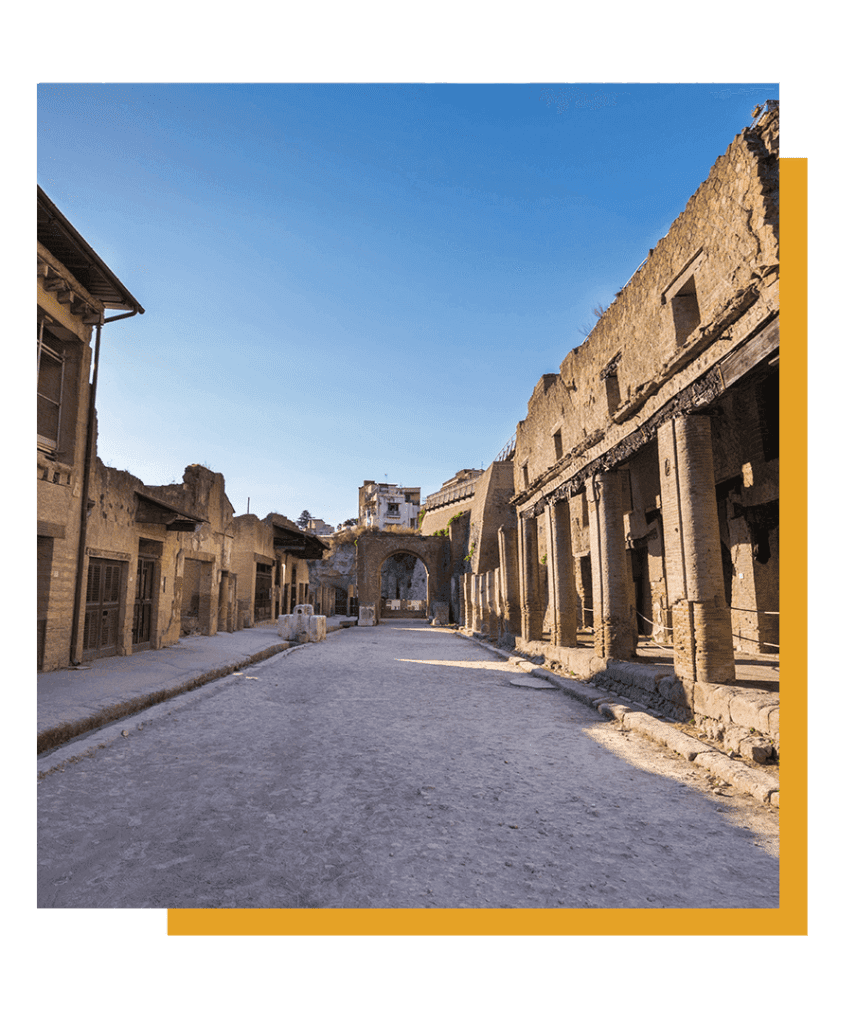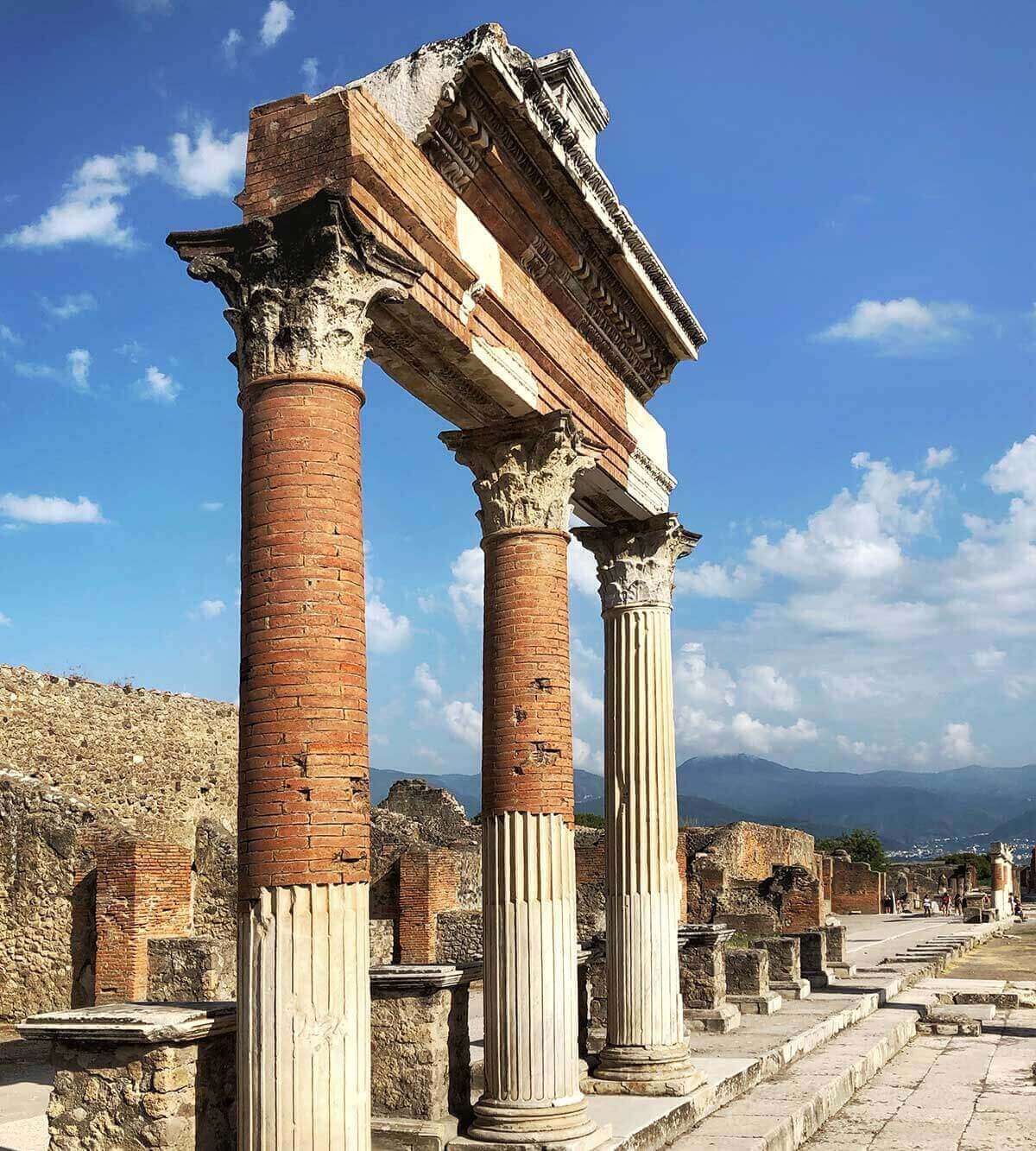Herculaneum
Herculaneum is home to a fantastic archaeological park that has been declared a UNESCO World Heritage Site.
The well-preserved condition of the site will make it easy for you to imagine life in that era and remain enchanted.
It will be like taking a plunge into the past, walking around and discovering what were once the private dwellings of the Romans, public buildings, temples and sumptuous baths. Fantastic frescoes can still be admired in many buildings.
It is a priceless destination that will undoubtedly fascinate you!

Herculaneum
Herculaneum is home to a fantastic archaeological park that has been declared a UNESCO World Heritage Site.
The well-preserved condition of the site will make it easy for you to imagine life in that era and remain enchanted.
It will be like taking a plunge into the past, walking around and discovering what were once the private dwellings of the Romans, public buildings, temples and sumptuous baths. Fantastic frescoes can still be admired in many buildings.
It is a priceless destination that will undoubtedly fascinate you!



Historical overview
According to the legend narrated by Dionysius of Halicarnassus, the city of Herculaneum was named after the Greek hero Hercules, its founder.
However, more credible research believes it was founded by the Oscans in the 12th century BC or by the Etruscans and then conquered in the 5th century BC by the Samnites.
In 90 B.C. it was conquered by the Romans and, thanks to its location by the sea, its healthy air and mild climate, became a holiday destination for many patrician families.
In 62 A.D. it was considerably damaged by an earthquake, while in 79 A.D. it was hit by the eruption of Vesuvius: first it was invaded by burning clouds with a temperature of about 400° and then by mudflows that buried the city, making its existence forgotten as the years went by.
It was a farmer, Ambrogio Nucerino, who in 1710, while digging a well to irrigate his vegetable garden, found fragments of precious marble that belonged to the theatre of the ancient city. Since then, several kings have undertaken excavations to unearth the buried city.
The excavations brought to light only a part of the ancient city (about 44 hectares), and today, with the exception of the baths and the gymnasium, most of the archaeological park that can be visited consists of private dwellings from the imperial age, characterised by a great variety of types: houses with traditional layouts, multi-family blocks of flats, and large residences.
Historical overview
According to the legend narrated by Dionysius of Halicarnassus, the city of Herculaneum was named after the Greek hero Hercules, its founder.
However, more credible research believes it was founded by the Oscans in the 12th century BC or by the Etruscans and then conquered in the 5th century BC by the Samnites.
In 90 B.C. it was conquered by the Romans and, thanks to its location by the sea, its healthy air and mild climate, became a holiday destination for many patrician families.
In 62 A.D. it was considerably damaged by an earthquake, while in 79 A.D. it was hit by the eruption of Vesuvius: first it was invaded by burning clouds with a temperature of about 400° and then by mudflows that buried the city, making its existence forgotten as the years went by.
It was a farmer, Ambrogio Nucerino, who in 1710, while digging a well to irrigate his vegetable garden, found fragments of precious marble that belonged to the theatre of the ancient city. Since then, several kings have undertaken excavations to unearth the buried city.
The excavations brought to light only a part of the ancient city (about 44 hectares), and today, with the exception of the baths and the gymnasium, most of the archaeological park that can be visited consists of private dwellings from the imperial age, characterised by a great variety of types: houses with traditional layouts, multi-family blocks of flats, and large residences.
Useful tips
Guided tour
we suggest to book a tour guide in order to visit the main attractions of the site.
Dress code
we recommend appropriate clothing for the visit: trainers and comfortable clothing, hat for protection from the sun.
Beverage
We suggest you to bring a bottle of water with you.
Children
We suggest the use of a baby carrier for small children.
FAQ
How many people is the excursion for?
The excursion is available for a maximum of 8 people.
where does the excursion start?
The meeting point with our driver will be at the accommodation facility where you are staying.
how long does the visit last?
It is possible to visit the most representative buildings of the ancient city in half a day.
Is it possible to choose the departure time?
During the summer, we recommend an early start in the morning but the tour can be customised. You can request more information in the form below.
Is it possible to have lunch on the site?
Not possible, within the Herculaneum excavations there are no dedicated lunch areas or snack bars or restaurants. It is possible to organise the excursion with a visit to the archaeological area and lunch in the surrounding areas.





